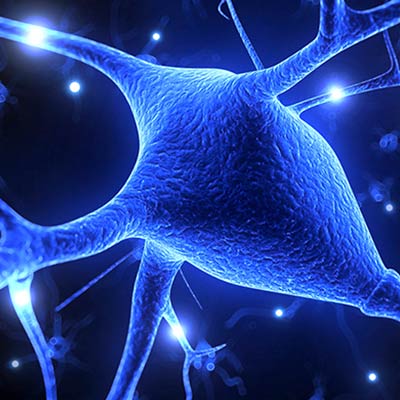Manipulate the signals
When people are confronted with an unknown piece of electronics, one way they can figure out how it works and what it does is to twiddle with the knobs and switches. That's been hard to do with the slick, knob-less surface of the brain.
Until recently, the only way to suss out the job of a particular clump of neurons was to give a person a task and record what brain regions became active. If a person speaks and a part of the brain revs up, chances are the two are related. These brain recordings add to information gleaned from people who had brain injuries and lost abilities, like speaking.
Together, that work built a good case for where tasks are handled throughout the brain – speaking here, movement there, aggression somewhere else. But missing was the ability to reversibly fiddle with the brain's knobs and see what happens.
Kurt HickmanAmit Etkin is part of the Neurocircuit initiative which is developing technologies to remotely active the brain. The ultimate goal is to better understand brain function and treat mental health conditions.
In the past decade, however, new techniques have become available for activating specific groups of neurons. One, called optogenetics, was developed by Karl Deisseroth, professor of psychiatry and of behavioral sciences. It provides a way of turning on and off individual neurons or whole groups of neurons using light.
Optogenetics involves genetically engineering neurons to produce a protein that triggers them to fire in response to light. Shining a light on those brain regions then induces behaviors that can indicate the role of those neurons. It's been invaluable for teasing apart how the brain controls actions or behaviors, but so far the work is only possible in lab animals.
Other groups are developing ways of remotely zapping the brain into action. "In that way we are bringing the concepts of optogenetics to humans in terms of trying to activate specific brain regions and monitor behavior," said Amit Etkin, assistant professor of psychiatry and behavioral sciences.
Etkin has been working with a technique called transcranial magnetic stimulation to stimulate regions of the brain close to the surface and observe the effects.
TMS can only reach the brain's surface, but members of another group of Etkin's colleagues in the NeuroCircuit initiative under the Stanford Neurosciences Institute think it could be possible to stimulate deeper regions of the brain using ultrasound. If that work, led by Stephen Baccus, associate professor of neurobiology, pans out, it could provide yet another way of fiddling with the brain's hidden dials.

